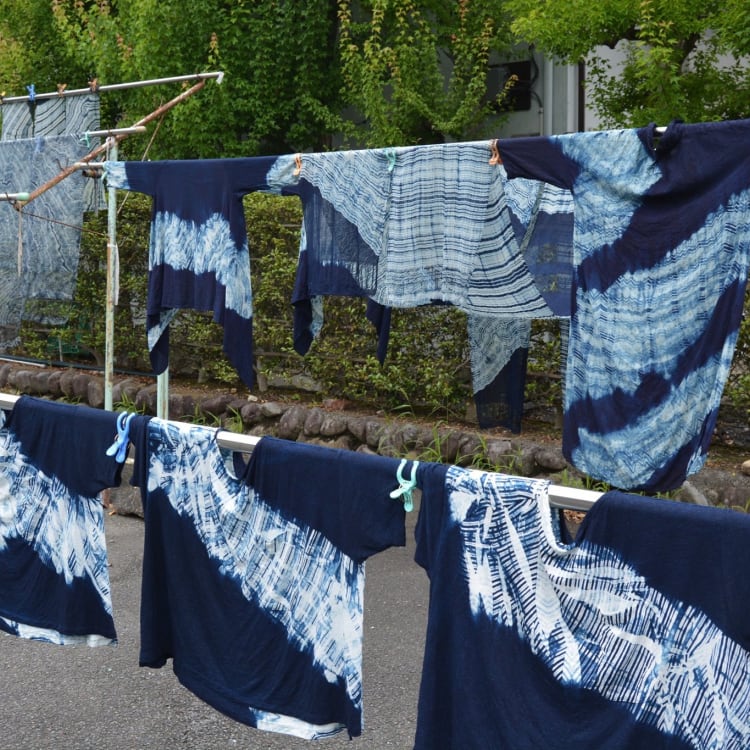
Experience Tokyo Traditional Crafts and Culture
Experience Tokyo Traditional Crafts and Culture
From “samurai blue” to glassblowing, making delicate fabric flowers to playing with your food, discover Tokyo traditional crafts and culture through hands-on experiences in the Tokyo area! These half-day workshops will make an unforgettable souvenir of your time in Japan.
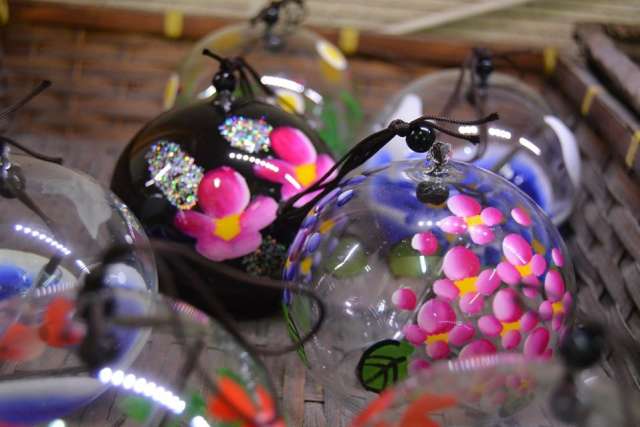
Play with your Food at Ganso Shokuhin Sample-ya (Kappabashi)
Some of the first things visitors to Japan will notice are the colorful, mouthwatering food samples proudly displayed in front of every café and restaurant. These food replicas, or food samples as they are known in Japanese, have a long and equally colorful history.
Takizo Iwasaki first encountered handmade replica foods at the beginning of the Showa Period (the first paraffin food models appeared in Tokyo and Osaka around 1917). He devised a commercial production method through trial and error and opened Iwasaki Factory in Osaka in 1932. Today, Iwasaki Foods (the parent company of Ganso Shokuhin Sample-ya) still produces about 60% of the food samples used in restaurants across Japan.
Food sample technology has continued to evolve and become more and more realistic. In the 1970s and 1980s, replica foods changed from colored wax to more durable resins and polyvinyl chloride, which can better withstand the punishing rigours of direct sunlight or heaters.
At Ganso Shokuhin Sample-ya in Kappabashi, guests can try their hand at making several wax food samples. The popular tempura and lettuce workshop is available year-round, while there are also seasonal workshops, like kakigori, colorful shaved ice, available in July.
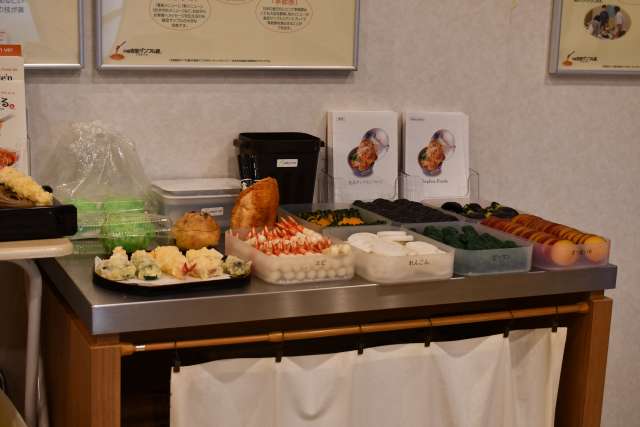
First, the instructor will demonstrate the technique to make the tempura and lettuce using colored wax drizzled or ladled into a warm water bath, and then participants have the chance to try for themselves. It is much more difficult than it looks! Once your items have been shaped, dipped in cold water and cooled, they’ll be packaged in realistic food packaging for you to take home.
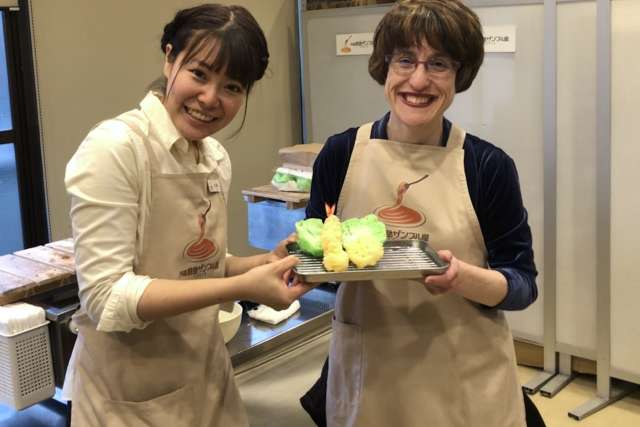
You can also purchase Sample’n Cooking replica kits with English instructions to take home with you. Prices range between JPY 1600 and 2800 for colorful drinks, ice cream, shaved ice, parfaits, pizza, fried rice, noodles, and ramen. When packing them in your luggage, the store recommends putting them in checked luggage as the kit contents are considered to be liquids.
The store also sells a wide range of affordable and realistic food sample novelty items like memo holders, stationary items and keychains.
Ganso Shokuhin Sample-ya
3-7-6 Nishi Asakusa, Taito-ku, Tokyo
Opening hours: 10:00 – 17:30
A cut above: Edo Kiriko cut glass (Asakusa)
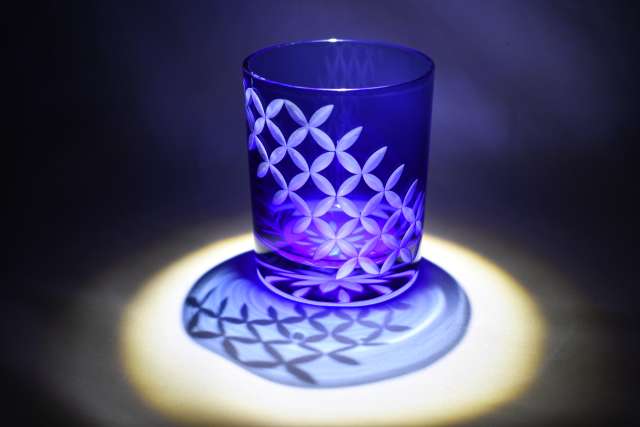
Dating back to 1834 with creator Kagaya Kyubei, who operated a glassware store in the Odenmacho area of Edo, Edo Kiriko became officially recognized as one of Tokyo’s traditional crafts in 1985. Using a grinder, artisans control the depth of the cuts to create stunning patterns on clear and colored glass.
The popular patterns made during the Edo Period were known as nanako. Twhile today there are a wide range of both traditional as well as modern patterns adorning tokuri (sake bottles) and guinomi (sake cups), as well as Western products such as wine glasses, whiskey glasses and other products like dishes and vases.
At family-owned Sokichi in Asakusa, you can make your own Edo Kiriko glass at a one-hour workshop for JPY 3300. Choose from a wide range of glass shapes, sizes, and colors (colored glasses require an additional fee).

Sokichi’s retail shop is famous with bartenders around the world for their wide selection of quality cut glass and crystal barware and accessories. For the Edo Kiriko workshop, you’ll head upstairs to their second-floor classrooms.
First, the instructor will demonstrate on a practice glass. You’ll spend about 20 minutes practicing the technique before sketching your own design using a black marker, and then cutting your glass for around 30 minutes. There are numerous suggested design cards in English and Japanese that demonstrate how to cut each pattern, from the traditional “shippo” interlocking rings, flowers, and woven bamboo to whimsical modern ones like dolphins and airplanes. The instructor will patiently guide you in selecting designs and explaining in depth about the art and history of Edo Kiriko.
Finally, you’ll have the chance to photograph your finished masterpiece.
Sokichi
2-1-14 Kaminarimon, Taito-ku, Tokyo
(across from Ginza Line Asakusa Station Exit 4, or Asakusa Line Asakusa Station Exit A3)
TEL.03-6802-8944
Opening hours: Weekdays 11:00 to 19:00, Weekends and holidays 11:00 to 18:00
Tsumami zaiku / Edo tsumami kanzashi
Tsumami means “to pinch,” and the gorgeous craft of tsumami zaiku and Edo tsumami kanzashi uses several different techniques involving folding and pinching fabric to create incredibly detailed, realistic flowers and arrangements. Edo tsumami kanzashi became officially recognized as a Traditional craft of Tokyo in 1982.
Most popular for special occasions such as the children’s holiday of 7-5-3, Coming of Age Day, and weddings, kanzashi, or ornamental hairpins, date back as far as the prehistoric Jomon Period, when stick ornaments were first used to decorate women’s hair. The ornate nihongami hairstyles of the Edo Period resulted in equally impressive tsumami kanzashi made to accentuate kimonos and the sophisticated hairstyles of the time.
Today, the most recognizable are the kisetsubana, or seasonal kanzashi, worn by Kyoto’s maiko, or apprentice geisha. This style of hair ornament first appeared in Kyoto during the Edo period and continues to be worn today. The maikos’ elaborate kanzashi change monthly and painstakingly replicate seasonal flowers and symbols like maple and ginkgo leaves, chrysanthemums, cherry blossoms and wisteria.
The two basic techniques used in tsumami zaiku are ken tsumami, or sword pinching, used to create leaves and more pointed petals, and maru tsumami, or round pinching, used to create a softer silhouette like plum petals. The individual petals are then affixed to a wooden board coated with a high-viscosity starch paste, placed on a round base, arranged, and dried. Once the glue has dried, multiple flowers can be wired together to create elaborate arrangements.

Various types of fabric are used, including silk and rayon chirimen as well as the traditional habutae silk used to line kimono. Chirimen has a slightly rough texture, and is easier for beginners to work with. Very few special tools are required for tsumami zaiku other than a wood board, starch paste, regular glue, and long, smooth tweezers, making this a great craft for all ages.
At Tsumami-zaiku ICHIRINDO in Asakusabashi, you can take a beginner lesson (1.5 hours, JPY 5400) with instructor Tomomi Yamashita to learn about the fascinating history and tools of tsumami zaiku firsthand. During the workshop, you’ll make a decorative wall hanging made up of several small flowers and leaves, or you can sign up for full-day or multi-day workshops for more advanced instruction. After your class, you can even purchase a starter toolkit and fabrics to take home!
For more information on tsumami zaiku and to book a lesson, visit tsumami workshop.
Ichirin-do
Asakusabashi 1-4-6, Endo Building 2F, Taito-ku Tokyo
(two-minute walk from the west exit of JR Soubu Line Asakusabashi Station)
The sound of summer: Edo Furin glass windchimes (Edogawa)
Japanese wind bells are called furin ; “fu” is wind and “rin” is bell in Japanese. First imported from China, furin wind bells can be often seen and heard during Japan’s humid summers. At Shinohara Furin Honpo in Edogawa, you can learn to blow your own glass windchime with the help of a glass master.
The glass used is the same material as window glass. Using a long narrow glass pipette, blow air gently through the pipe to inflate the molten glass ball. The artisan will help you to turn as you blow so the glass becomes perfectly round. It takes about three years to learn to create a perfectly round shape, so don’t worry if your first attempt doesn’t turn out – you can try again!
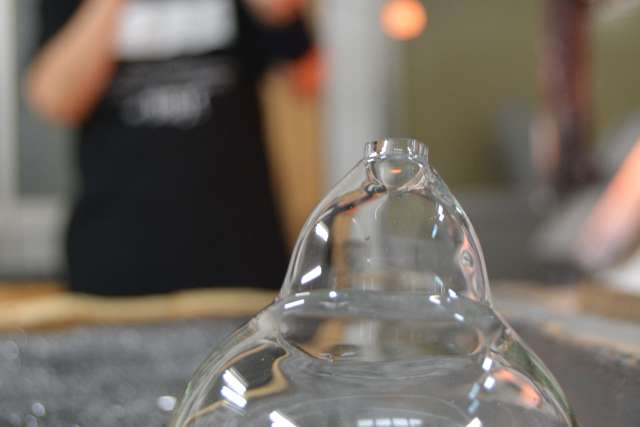
After cooling the windchime in sand for around 20 minutes, the artisan will knock off the extra glass using a piece of brick (jagged edges make a more beautiful sound against the glass clapper) and you can decorate your windchime with the design of your choice (traditional and popular summer themes are fireworks, goldfish and morning glory flowers).
Shinohara Furin Honpo
Minami-Shinozaki-machi 4-22-5, Edogawa Ward, Tokyo
(Nearest Station : Toei Shinjuku Line Mizue Station or Shinozaki Station)
Rhapsody in Blue: traditional indigo dyeing (Ome)

Aizome, or indigo dyeing, has been practiced in Japan for centuries. The widespread popularity of indigo dyeing can be traced back to the Edo era (1603-1868). Edo-era shoguns restricted vibrant colors and fine fabrics like silk to the upper classes, so commoners took to wearing cotton and hemp indigo fabrics, which also boasted a number of antimicrobial and dirt-and-insect-repelling properties. These properties also made them popular with samurai, which is one reason why indigo is called Samurai Blue.
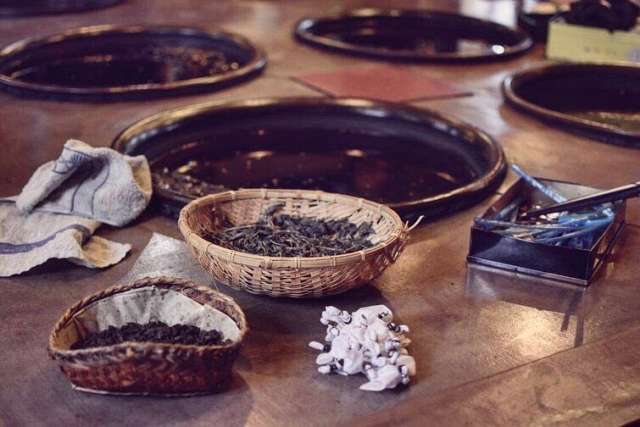
At Kosoen Studio in Ome, you can dye your choice of handkerchief, scarf, T-shirt or other item. For an additional fee, you can bring your own material to be dyed, but not all fabrics will hold the dye well.
Fascinating watching workers plunge their arms into the fragrant vats multiple times to make sure items were sufficiently saturated with indigo. The indigo solution is slightly slippery between your fingers and it will take several days for the blue to fade from your hands and fingernails with some vigorous scrubbing, but the end results are worth it!
You can also purchase clothing and textiles dyed by the studio’s indigo experts in the attached showroom.
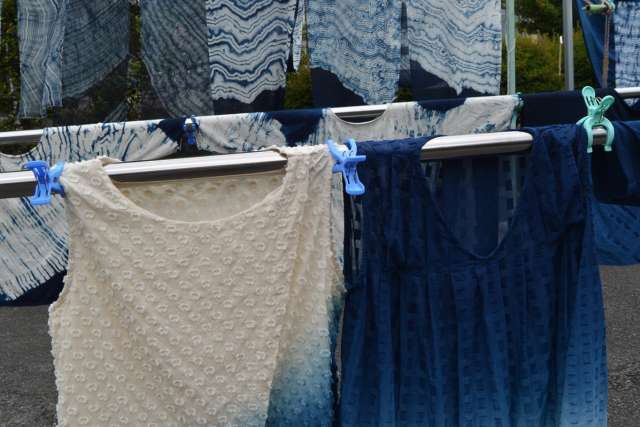
Kosoen Studio
8-200 Nagabuchi, Ome city, Tokyo
During your visit to Japan, why not try your hand at these traditional crafts as a lasting memory of your trip to Japan? All of these workshops can be done in a few hours and you can take your handmade item with you the same day!




















































